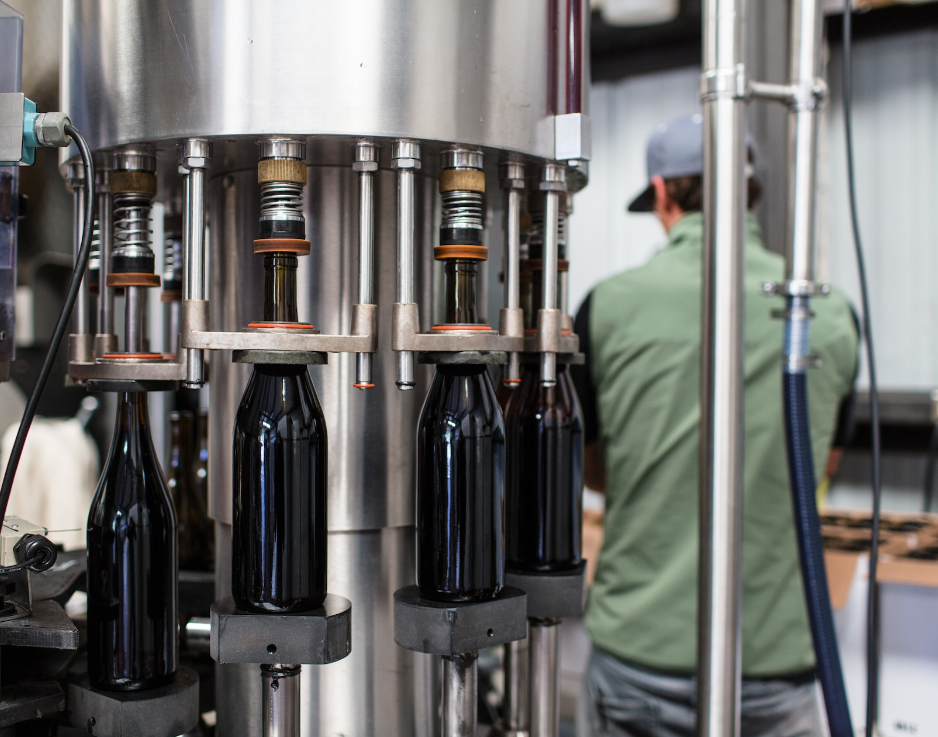De-aerated water in brewing in combination with nitrogen for tank purging is vital for ensuring a quality product. Nitrogen purging begins from the tank’s bottom, displacing DO and causing it to escape through the tank’s top vent. In this blog we will further explore the topic and delve into the unique benefits of this technique.
A look into the De-aeration process
Oxygen Control:
De-aerated water is essential for controlling the oxygen levels in the brewing process. Oxygen can be an enemy of beer quality because it can lead to off-flavours, oxidation, and spoilage.
Brewers aim to minimize the presence of oxygen throughout the brewing process, and de-aerated water is a tool which is used by many.
The De-aeration Process:
De-aerated water is typically produced using specialized equipment designed to remove dissolved oxygen from water.
Common methods include vacuum de-aeration and nitrogen sparging. These methods effectively reduce the oxygen content to very low levels, ensuring that the water used in brewing is oxygen-free.
Wort Production:
De-aerated water is particularly important during wort production, where it combines with malted barley and hops to create the sugary liquid that eventually becomes beer.
High oxygen levels in wort can lead to undesirable flavours and affect yeast fermentation. Using de-aerated water helps maintain a controlled and consistent brewing process.
Enhancing beer flavour, freshness and customers’ expectations
1. Preservation of Freshness and Hops: Hops are the star of the show when it comes to beer, particularly IPAs. They contribute a wide range of aromatic compounds, including floral, citrus, pine, and herbal notes. These volatile compounds are responsible for the beer’s distinctive aroma and are highly susceptible to oxidation. When oxygen interacts with these compounds, it can lead to the loss of the vibrant hop character.
Achieving the right balance of bitterness and flavour from hops is an art in brewing.
Oxidation can shift this balance by mellowing the hop character and allowing bitterness to dominate, which is not the intended profile for many hop-forward styles like IPAs. Brewers work diligently to craft beers with a harmonious blend of hop flavours, and any alteration due to oxidation can be detrimental.
2. Fruitiness and Delicate Notes: Light lagers and certain ale styles are appreciated for their crisp, clean, and refreshing qualities. Delicate fruitiness, subtle malt sweetness, and a clean finish define their flavour profiles. Any oxidation can introduce off-flavours, making the beer taste stale or even papery, which contradicts the intended light and refreshing experience.
3. Consumer Expectations: Craft beer enthusiasts have come to expect and appreciate the vibrant, fresh flavours associated with specific beer styles. Breweries build their reputations and consumer loyalty on delivering these distinct flavours profiles consistently. Failure to preserve freshness can lead to disappointed customers and damage a brewery’s reputation.
4. Yeast Health: Yeast is a critical component in the fermentation process, and it is sensitive to oxygen. High levels of dissolved oxygen can stress yeast and lead to the production of unwanted flavours. De-aerated water helps create an environment conducive to healthy yeast activity.
Since we have taken a look what the de-aeration process is, and some of its benefits, let us explore 3 approaches with which this process can be achieved.

3 Methods for Quality Deaeration:
Column Deaerator:
One of the methods employed for deaeration involves using a tall column filled with structured packing material, often made of stainless steel, to maximize the contact area between water and the stripping gas, which can be either CO2 or gaseous nitrogen (N2).
Water is introduced from the top of the column, while stripping gas is injected from the bottom. When the two meet, the gas pressure reduces the DO pressure in the water.
Hence, the CO2 or N2 dissolves in the water, and the scrubbed oxygen is released and vented out through a valve at the top, along with any residual stripping gas. Both cold and hot water column systems exist, with hot water systems typically yielding better results.
Vacuum/Membrane Deaerator:
In a vacuum deaerator, stripping gas enters a water tank, often filled with material to increase surface contact. A vacuum is then applied to boil the water and expel DO and any remaining CO2 or N2. The membrane version utilizes microporous, hydrophobic fibres to introduce stripping gas, which is then removed by vacuum. Water flow creates a counter current, and the pressure difference between the stripping gas and O2 forces the oxygen out of the solution. Vacuum and membrane deaeration methods are effective at removing oxygen from water.
DAW Feedwater Skid:
Feedwater skids are used to continuously feed deaerated water (DAW) into the brewing process. This contraption mounts a water tank atop a deaerator and provides DAW on demand.
The skid works by injecting CO2 or N2 into a moving stream of water, breaking down the gas into tiny bubbles. As the water enters the holding tank, O2 is vented out along with the stripping gas.
Feedwater deaerators are cost-effective and efficient, providing a consistent supply of DAW with low oxygen levels. Boiling and Adding Stripping Gas: A simple and cost-effective method for deaerating water involves boiling it to drive out dissolved gases, including oxygen. While this method may require more manual intervention and monitoring, it is a practical option for brewers looking to deaerate water without significant equipment investments.
Want to know more about our offerings? Click here to find out more.
